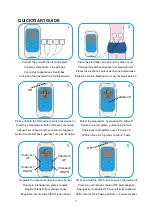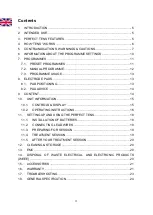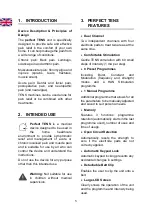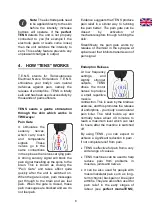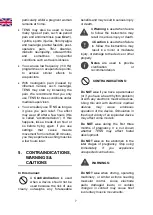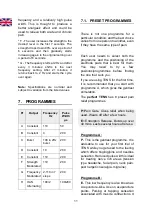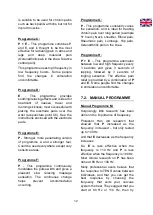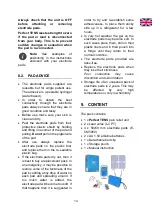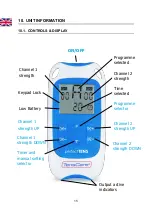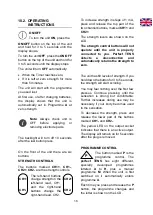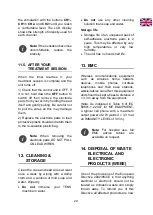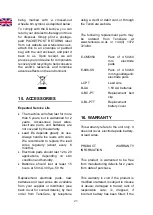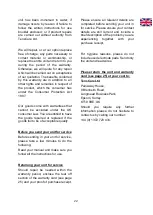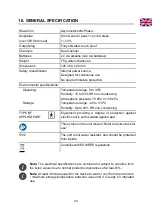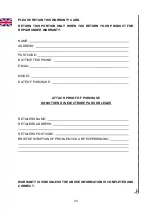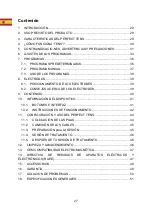
12
is suitable to be used for chronic pains
such as back pain & arthritis, but not for
injured muscles.
Programme C:
P + E
– This programme combines P
and E, and is thought to be the most
effective for radiating pain in arms and
legs and deep muscular pain
(Osteoarthritic pain in the knee, Sciatica
central pain).
This programme uses high frequency in
low frequency bursts. Some people
find the changes in stimulation
uncomfortable.
Programme D:
E
- This programme provides
soothing/relaxing effects and is ideal for
treatment of nausea, travel and
morning sickness; most successful with
placing the electrode pads over the
wrist (acupuncture point C6). See the
instructions enclosed with the electrode
pads.
Programme E:
P
- Stronger, more penetrating version
of programme A and a stronger feel.
Could be used everywhere except very
sensitive areas.
Programme F:
P
- This programme continuously
modulates the pulse width and gives a
pleasant slow relaxing massage
sensation. The continuous change
helps prevent accommodation
occurring.
Programme G:
P
- This programme constantly varies
the sensation, and is ideal for treating
chronic pain over long period (example
5+ hours). Neck, shoulder, Elbow pain,
Rheumatic pain, Lumbago, Hip pain,
Osteoarthritic pain in the knee.
Programme H:
P + E
– This programme alternates
between low and high frequency every
3 seconds and gives 3 seconds of
tapping, followed by 3 seconds of
tingling sensation. The effective pain
relief is provided by a combination of
P
and
E
. Some people find the changes
in stimulation uncomfortable.
7.2. MANUAL PROGRAMME
Manual Programme M:
Surprisingly little research has been
done on the importance of frequency.
Professor Han did research that
showed that
P
increased as the
frequency increased – but only tested
up to 100 Hz.
And that
E
decreases as the frequency
increases.
So,
E
is less effective when the
frequency is >10 Hz and
P
is less
effective when the frequency is <80 Hz.
Most clinical research on
P
has been
done at 80 Hz or 100 Hz.
Many professional users believe that
the response to TENS varies between
individuals, and that you can get the
best response by choosing the
frequency that suits your nervous
system the best. They suggest that you
start at 80 Hz or 110 Hz, then try
Summary of Contents for perfect TENS
Page 1: ...0 INSTRUCTIONS FOR USE READ CAREFULLY BEFORE USE...
Page 110: ...109 Notes...


